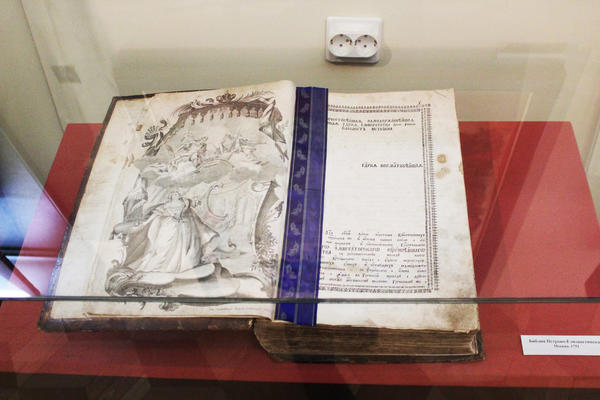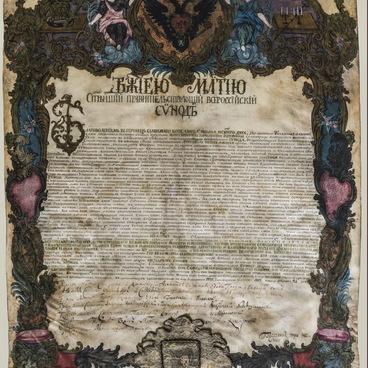The Elizabeth or Peter-Elizabeth Bible is a bible translated into Church Slavonic from Greek and Latin in 1751. It was named after then-reigning Empress Elizabeth.
Elizabeth continued the deeds of her father, Peter the Great, who had issued an order to publish a Church Slavonic translation of the Bible in 1712. The text was compared to existing translations into other languages. The work lasted for over ten years: By 1724, the text had been prepared, twice revised, samples had been printed and sent to the Synod, the highest governing body of the Russian Orthodox Church, for approval. Peter the Great died in January 1725, and the work on the edition was suspended.
On February 14, 1744, Empress Elizabeth issued an order for the Synod, instructing it to carry on the work begun 30 years before. The full version of the translation was prepared for print by 1750, and in 1751, the book came out. Five years later, a second edition was published, with marginal notes and corrected errors. By 1812, that version had been reprinted 22 times.
There are more than 1,000 pages in the Elizabeth Bible. The text is printed in two columns, in an easily readable type, and the pages are adorned with decorative frames. In the beginning and at the end of each chapter, the compilers put 52 prints: headpieces, initial capitals and tailpieces styled after Russian Baroque. It is a distinguishing feature of the Elizabeth edition.
Elizabeth continued the deeds of her father, Peter the Great, who had issued an order to publish a Church Slavonic translation of the Bible in 1712. The text was compared to existing translations into other languages. The work lasted for over ten years: By 1724, the text had been prepared, twice revised, samples had been printed and sent to the Synod, the highest governing body of the Russian Orthodox Church, for approval. Peter the Great died in January 1725, and the work on the edition was suspended.
On February 14, 1744, Empress Elizabeth issued an order for the Synod, instructing it to carry on the work begun 30 years before. The full version of the translation was prepared for print by 1750, and in 1751, the book came out. Five years later, a second edition was published, with marginal notes and corrected errors. By 1812, that version had been reprinted 22 times.
There are more than 1,000 pages in the Elizabeth Bible. The text is printed in two columns, in an easily readable type, and the pages are adorned with decorative frames. In the beginning and at the end of each chapter, the compilers put 52 prints: headpieces, initial capitals and tailpieces styled after Russian Baroque. It is a distinguishing feature of the Elizabeth edition.




